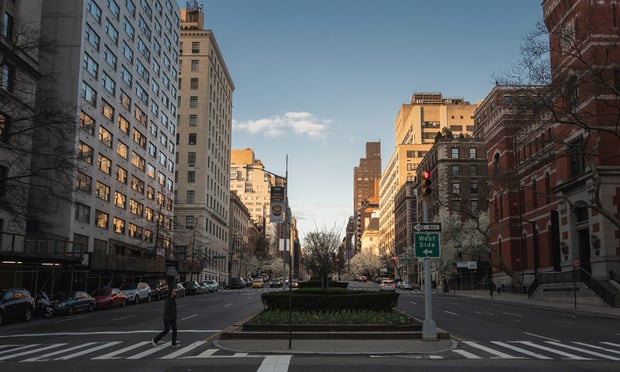NEW YORK CITY—Millennial employees are in high demand across all industries. They already make up a third of the US workforce. By 2025, millennials will comprise 75% of the workforce, and Manhattan companies are already competing to add the best of them to their talent pipeline. As companies seek to use their offices to attract and retain millennial talent, relocating to new, state-of-the-art space has become an increasingly attractive alternative to renewing and renovating existing workplaces.
In the past, Manhattan real estate decisions were based on the preferences of the C-suite. The commute from the suburbs tended to concentrate companies near Grand Central, Penn Station and Times Square. Workplaces were designed to benefit the top of a company's hierarchy, with senior executives in enclosed, perimeter offices with windows, and younger employees corralled in high-wall cubicles with little natural light and visibility. Pantries were hidden in dark, “back-of-the-house” obscure areas. Amenities were not part of the vernacular.
Now, human resources professionals are weighing in on real estate decisions in an effort to use office space and location as tools for attracting and retaining millennials, who prefer open space, natural light, amenities and neighborhoods with diverse and modern retail options.
A company's office is seen as a reflection of corporate culture, influencing candidates' first impressions of how progressive, employee-friendly, smart—ok, Google-like—a company is. This isn't just a trend in the technology and media sectors. Even more traditional business like law firms, consulting organizations, not-for-profits and accounting firms are creating modern workplaces to lure millennials in Manhattan's battle for talent.
New and completely reimagined buildings like those at Hudson Yards, the World Trade Center and Brookfield Place and new or completely rehabilitated boutique office buildings along the High Line in Midtown South offer the progressive workplace design, modern amenities and exciting retail atmosphere that millennials want. Such efforts are to make relocating to these buildings significantly appealing to Manhattan office tenants.
With virtually column-free spaces, these new buildings also offer companies a greater opportunity to densify with space reduction averaging 20%. Even though rents in these new buildings are higher, if tenants are paying rent on 20% less space, they can achieve significant savings.
Densification isn't just about fitting more people into a smaller floorplate. Open office plans with flexible spaces, cool amenities and room for interaction and sharing are seen as a way to keep employees engaged, help them enjoy being at work, encourage collaboration with each other so they can be more productive even with longer hours, and stay happier while at work.
To compete with these new buildings, landlords of older product are investing significant capital to modernize their properties, creating more modern, efficient space and adding new-age amenities such as food halls, lounge areas, conference and fitness centers and outdoor space.
Relocating used to be the more expensive option for tenants approaching a lease expiration after factoring in the cost of moving and building out new space. A few years ago, a relocating tenant would have to spend a significant amount of cash on the build-out of new space (above a tenant improvement allowance), furniture, wiring, legal and architectural fees, the move itself and more.
Today, many owners of both new and older buildings are so hungry for tenants that they are offering to cover most if not all of these costs through tenant improvement allowances and new building installations at higher values than the industry has ever seen, in addition to lengthy free-rent periods.
The financial incentives to relocate are now so compelling that renewing in place is no longer always the cost-effective solution. Depending on the structure and amenity offerings of the building, renovating existing space in an older building might not yield the same efficiency gains that a new space would. The renewing tenant, even after a complicated and cumbersome staged renovation, may still be occupying a higher square footage than would be necessary in a new building, resulting in a higher rent. In addition to a potentially more costly scenario, a company looking to renew and revamp their existing space is faced with the aggravation, time consumption and productivity loss of a gut renovation and remodel.
Now more than ever, there are tremendous opportunities to upgrade office space to a standard that attracts the best possible millennial employees and at the same time reduce real estate costs. It's a great time to be a tenant, but there are many options and variables to consider when navigating which real estate solution meets a company's business objectives to truly reap the benefits of the Manhattan office market.
Jeffrey Peck is the vice chairman of Savills Studley, commercial real estate services firm specializing in tenant representation. The views expressed here are the author's own.
Want to continue reading?
Become a Free ALM Digital Reader.
Once you are an ALM Digital Member, you’ll receive:
- Breaking commercial real estate news and analysis, on-site and via our newsletters and custom alerts
- Educational webcasts, white papers, and ebooks from industry thought leaders
- Critical coverage of the property casualty insurance and financial advisory markets on our other ALM sites, PropertyCasualty360 and ThinkAdvisor
Already have an account? Sign In Now
*May exclude premium content© 2025 ALM Global, LLC, All Rights Reserved. Request academic re-use from www.copyright.com. All other uses, submit a request to [email protected]. For more information visit Asset & Logo Licensing.









